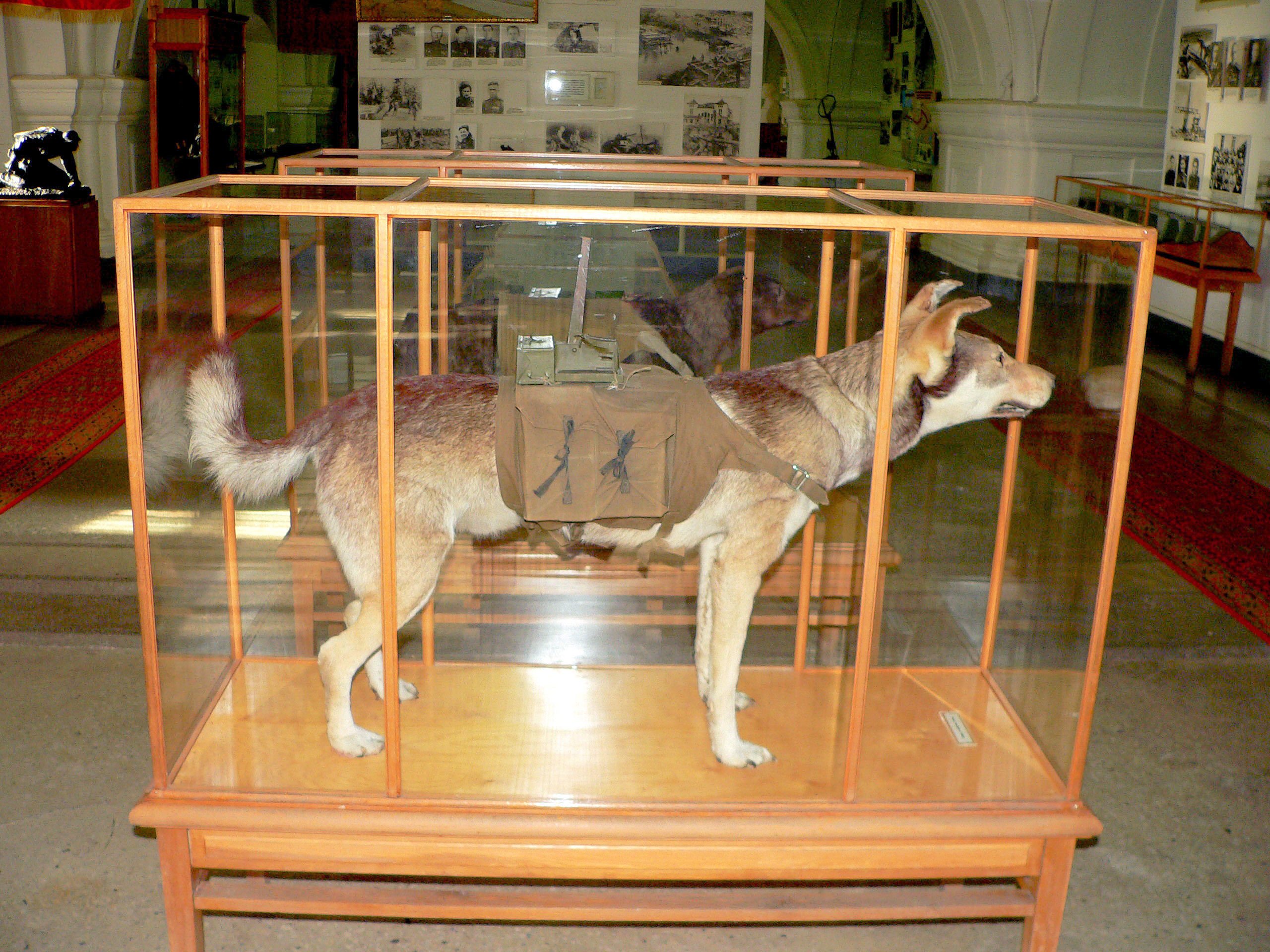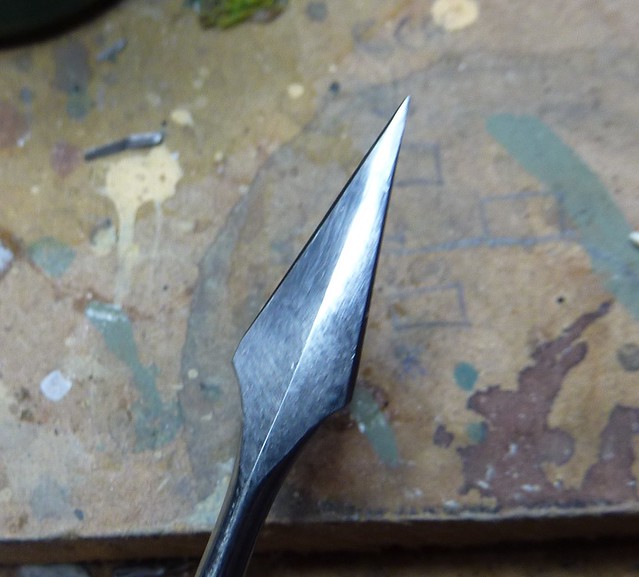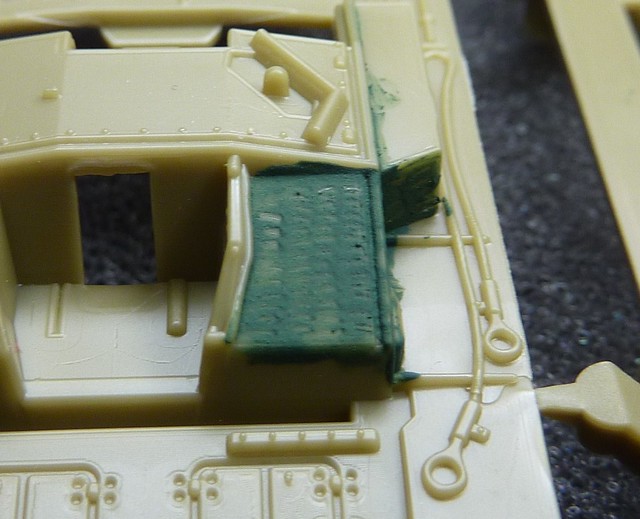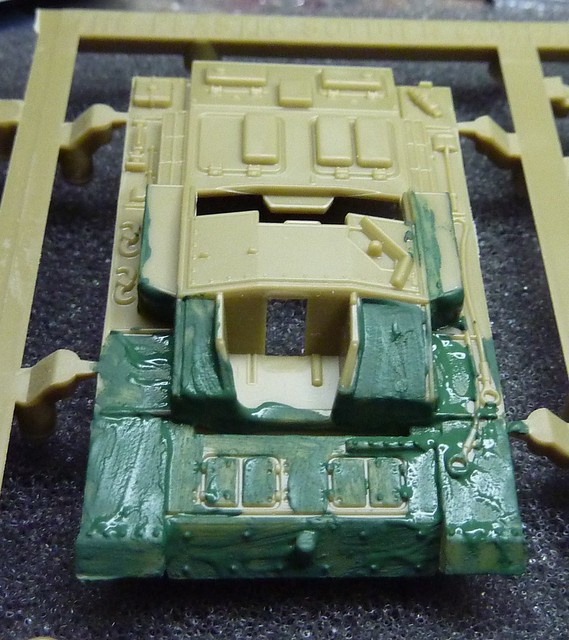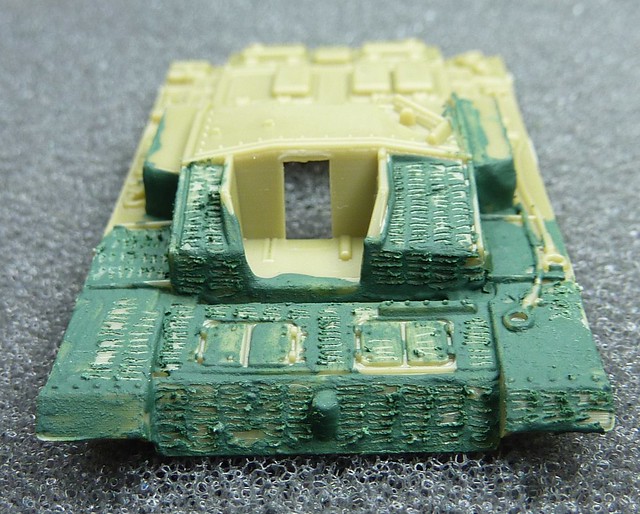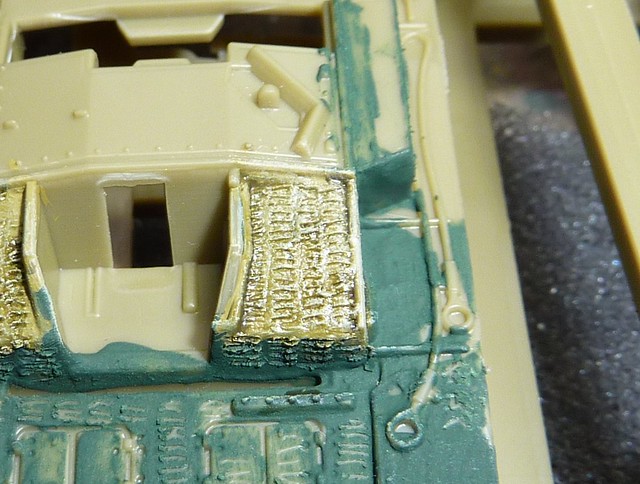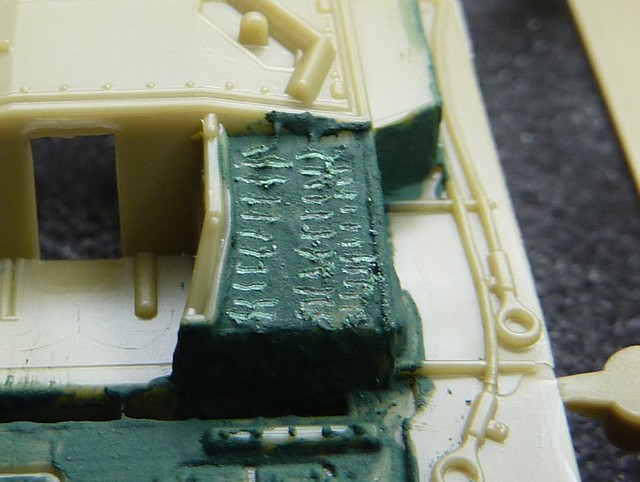in 3... 2... 1...
Hmm, November 2nd was the last update you say? I guess I have some explaining to do...
Okay, so about November I really knuckled down on building terrain for the Brighton Bash Tournament. With the assistance of Mike and Nathan, over the course of November, December and the first few weeks of January we cracked out 40ft of tree lines and about 50ft of hedge rows along with some Ironclad Bocage sections and a
Kerr and King village in a box! The likes of Skip, Steve B and
Si also contributed.
 |
| Kerr and King Normandy Buildings - Donated by Skip, base coated by Mike (along with FFI graffiti), fine detail and frontage by me. |
The tournament seemed to go well and the terrain was well received. I took photos over the weekend which can be found
here (photo-bucket uploaded them in reverse order annoyingly).
It took me a while to recover enthusiasm after that, but did eventually pick up the brush in late January to do some M3 Stuart I "Honey" tanks in Operation Crusader era Caunter camo. I took photos along the way and we'll look at them at some point in the future.
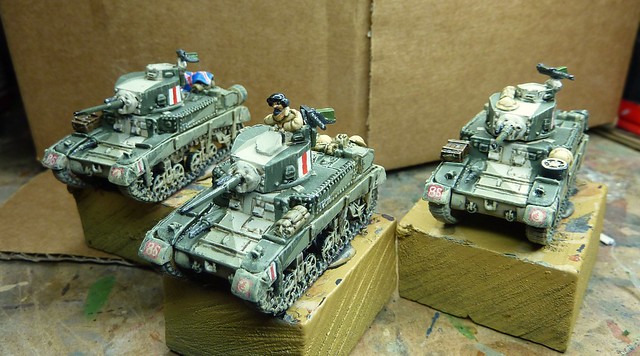 |
| Ready to stroll around the blue! |
Finally, the release of the Grey Wolf and Red Bear source books for Flames of War got me looking at the Eastern Front with renewed interest. I picked up a few boxes of
Plastic Soldier Company StuG III to form a Begleit StuG Battery and that really forms the basis for today's article. If your interested, I did a review on the StuG kit over at
Mighty Miniatures.
I want the StuGs to be multi-purpose so they can be just as easily used as a Panzer Battalion equipped with StuG IIIG or as a Normandy era StuG Battery, neither of which have tanks riders. Now, I could just ignore the tank escorts when appropriate and leave them as a permanently fixed part of the tank, but that would be far too simple (as well as confusing if I don't upgrade all the platoons in the company to have Begleit). Instead, I want to magnetize the the riders and the tank to make them removable.
The main issue with this approach is the Begleit StuG riders.
They come as a set of separate figures, rather than as a clump of figures (
as the Russian equivalent do/did). Whilst this makes for a more versatile figure it does complicate the magnetisation process!
To get around this I decided to use a central piece of stowage to take the magnet, and then mount the figures from this, daisy chaining them if necceary. This would allow me to disperse the figures around the back of the tank whilst still keeping them as a single whole that could be lifted off as required.
Placing the magnet on the tank side was simplicity itself. A Ø1.5mm rare earth magnet (I used
Modifix) would sit in between the engine covers of the StuG so the magnet on the tank would need to correspond to this location.
 |
| Almost made to measure! |
The plastic is thin enough to be semi-transparent. Holding the upper hull of the StuG up to a bright light, I scribed the corresponding point on the underside of the hull between the engine deck blisters and used this to glue a magnet in place.
 |
| Stealth Mode Initiated! |
It's important to keep all the magnets pointing the right way so I glued a magnet to a piece of stowage first and held that in place on the hull when gluing the one on the underside. The magnet on the underside will, when dropped into place, self locate AND make sure its pointing the right way.
 |
| If you look closely you can see where the magnet dragged itself into place |
That done, I completed the construction of the StuG's (an article in itself, maybe next week). The magnet on the tank is now completely out of sight.
The next stage is to play around with some blue tac and find a good pose for the tank riders. I use three or four of the Begleit models for each tank, positioning them around a crate, oil drum or other convenient piece of stowage that will accommodate a 1.5mm magnet.
Once happy, I use a 3mm drill bit in a dremel to drill a hole to locate the magnet. I then place the magnet on the hull (to ensure its up the right way), added a dab of super glue and then put the drilled stowage onto it. Keep moving the two bits so they can't get stuck to the hull!
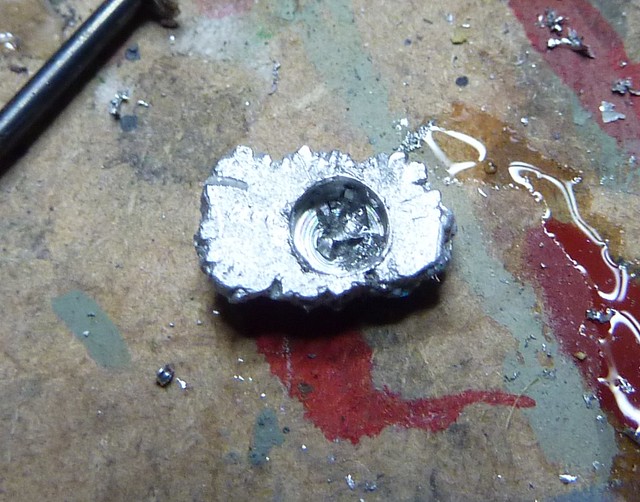 |
| It's obviously important to make sure that the stowage is bigger than a 3mm hole... |
It's now a case of pinning the Begleit to the stowage. Take one of the Begleit and dab a bit of bright paint (I use red) on it then push it against the stowage to transfer the paint over. This lets you work out where you should drill if its difficult to judge.
Now, use a 0.5mm/0.75mm drill to place a hole on both the Begleit and the stowage.
You now need a piece of metal wire to pin the two bits together. I use sandwich bag tie wraps as they tend to be about 0.5mm thick. Cut off an plastic covering and stick one end into one piece with some superglue. Once dry, cut to length and stick into the other piece.
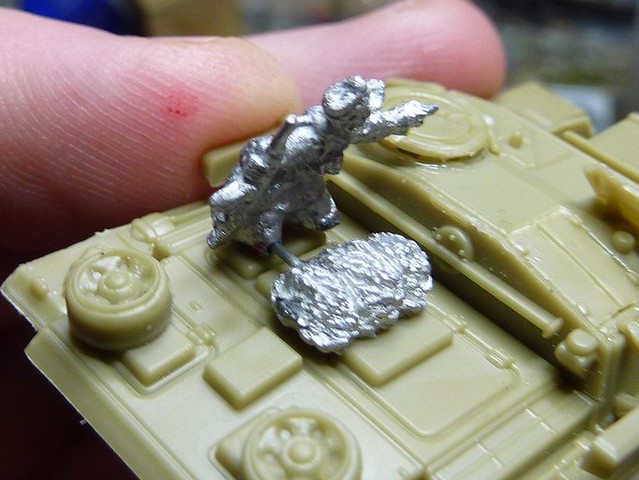 |
| The very definition of "being pinned" |
A similar technique can be used to attach a Begleit to a Begleit already attached to the stowage ("daisy-chaining").
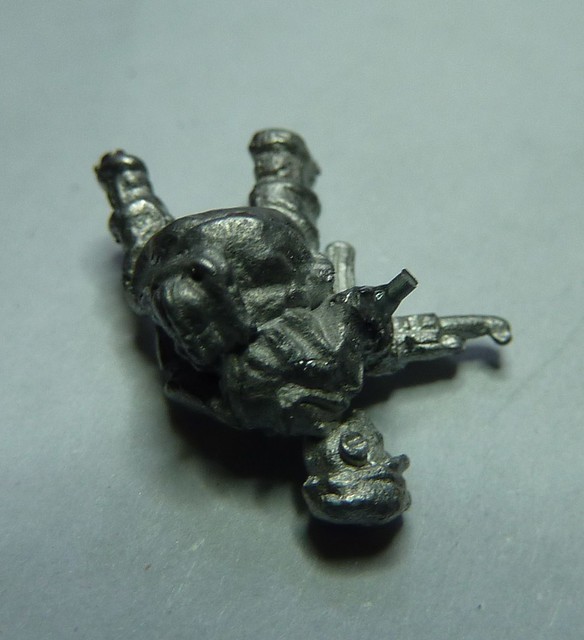 |
| Oooh, nasty! |
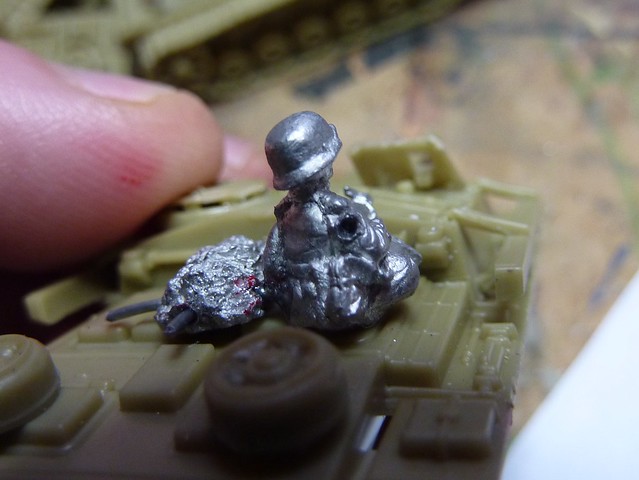 |
| As can be seen, a similar technique can be used for 0.50 cal exit wounds... |
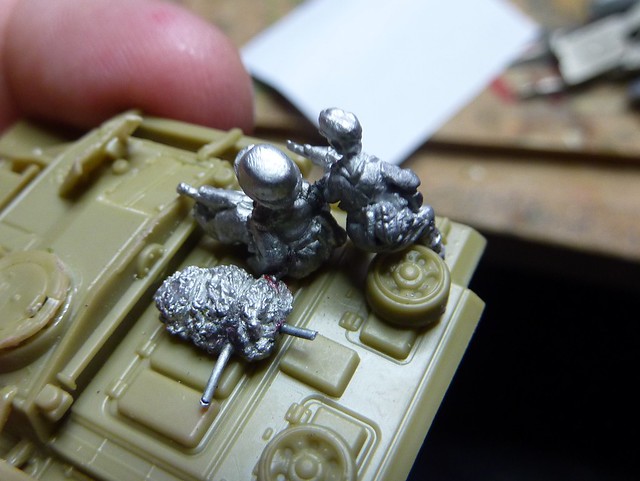 |
| <sing>"here I am, stuck in the middle with you"</sing> |
Once this is dry it should leave a cluster of Begleit and stowage that lifts clear of the hull like so:
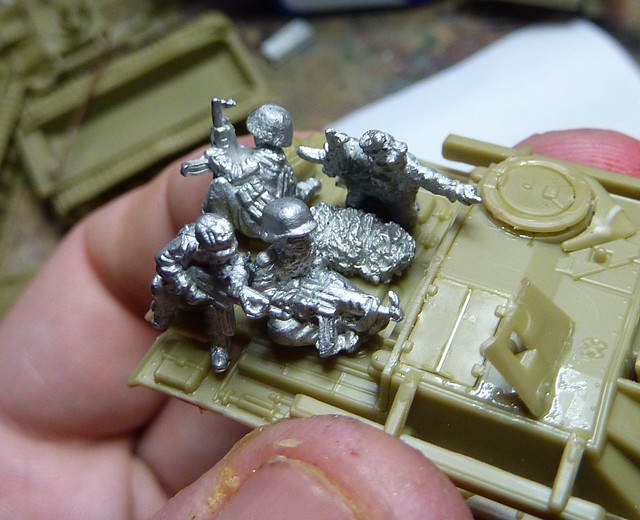 |
| All ready to keep them damn ruskies off the StuG |
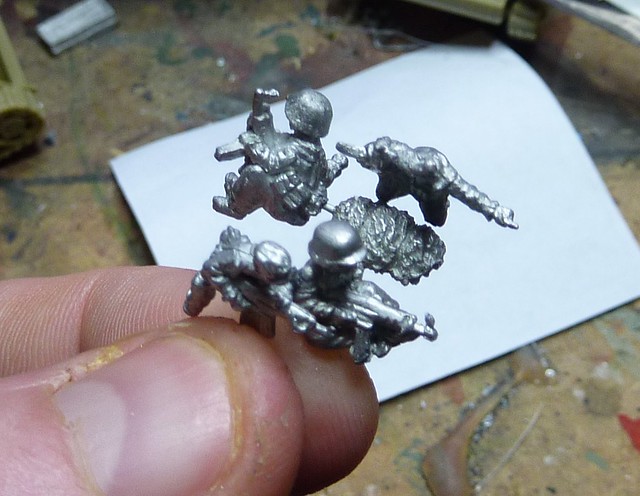 |
| "Stealth Mode Ini.. wait. What do you mean it doesn't work on the escorts?" |
The next stage will be to go back and add some green stuff tarps and bed rolls to hide the pins where I've needed to use long ones and also add some more stowage so it really looks like the Escorts are having to find somewhere to sit.
Of course, the magnet in the hull would also allow us to make "destroyed" smoke plumes or clusters of stowage (so the rear hull doesn't look empty without riders).
So there we go. Next update will either look at the finishing work on the escorts or tips on building the StuG kit depending how much work I get done! I'll try and get back into weekly updates too.



